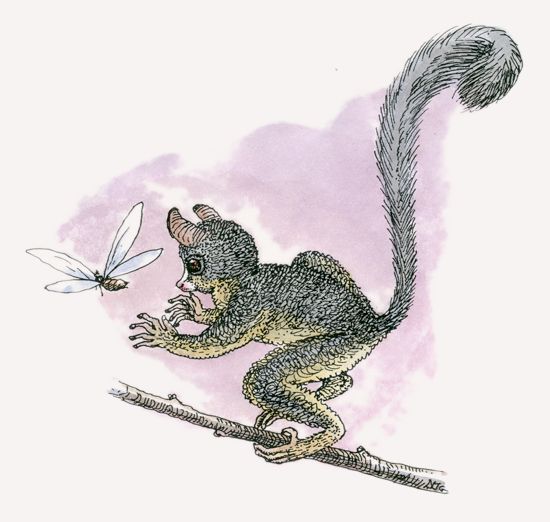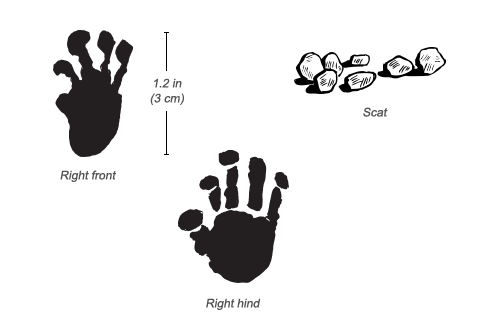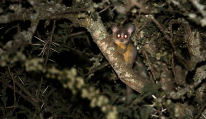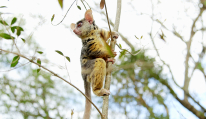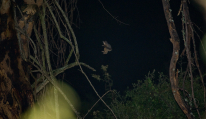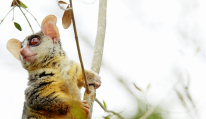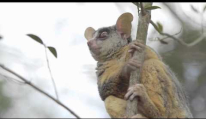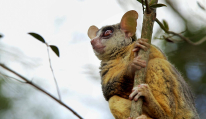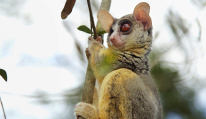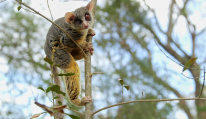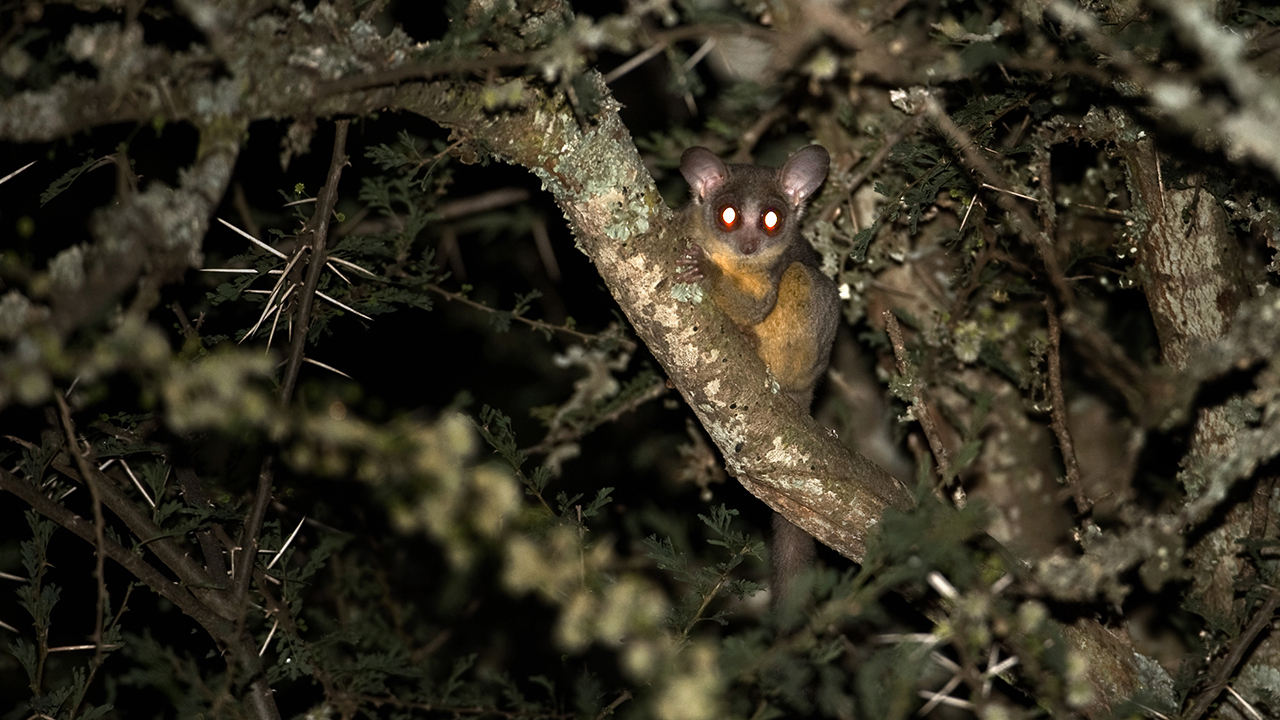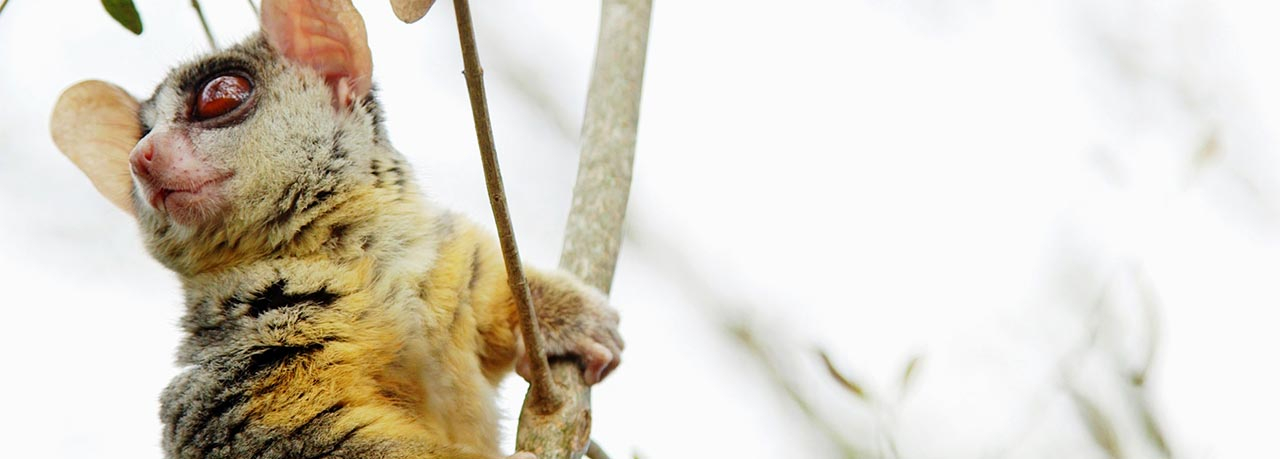Social Structure
Senegal bushbabies, or galagos, live and forage independently or in small groups of two or three. Males are more likely than females to venture from the area where they were born. Bushbaby males tend to be more tolerant of other males (so long as they are smaller or submissive) than females are of other females that enter their ranges.
Communication
Bushbabies have large, highly mobile ears that move independently of each other. They can hear a wide range of frequencies, from 250 to 64,000 Hertz. (Humans can only hear up to 20,000 Hertz.) The high-frequency calls between mothers and infants probably evolved as a warning tool, since raptors—likely predators—cannot hear these frequencies. Adults use 18 distinct calls, but their low-pitched woo is their loudest and most distinctive call.
Behavior
Active from dusk until dawn, bushbabies spend only one percent of their time on the ground. The majority—59 percent—of their time is spent less than 33 feet (10 m) from the ground in trees and bushes. A mother “parks” her infant on a limb while she forages during the night, then picks up the baby before dawn to return to their nest high in the trees. Bushbabies make their nests out of vegetation or use an abandoned bird’s nest or an unoccupied beehive.
Conservation
Bushbabies are widespread, and their habitat has not been greatly degraded by human populations.

